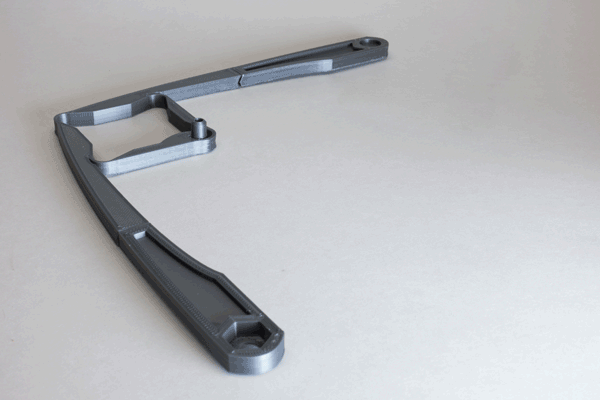
This version of the pantograph uses the flexibility of the material instead of complicated joints. This makes it super simple to assemble, but limits its range of motion. The 3D model prints in three pieces so it can fit on even the smallest 3D printer, and the only other required part is a probe made of 1/8″ Stainless Steel and a short piece of 22 gage Piano Wire.
That’s all you need to operate it 2 handed. If you want to improve the stability you can add the base from the normal PantoProbe and a 1/4-20 nut.


